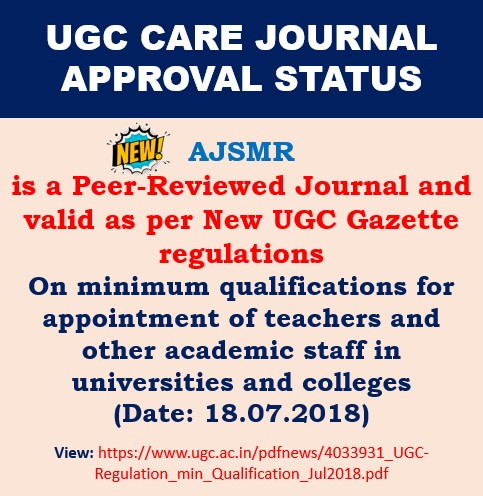Original Research Article I Volume 7 I Issue 1 I 2021
Quantitative estimation of Proteins in different tissues of V instar larvae, Cocoon and Yielded silk of Tasar silkworm, A. mylitta D (Daba BV) treated by polyamines (Spermidine, Spermine, and Putrescine)
Swamy Uppula, Shamitha Gangupanthula
The American Journal of Science and Medical Research; 7(1); 1-9
DOI:http://dx.doi.org/10.17812/ajsmr711
Abstract:
Tasar silkworm, Antheraea mylitta Drury, is a silk-producing lepidopteran insect (family: Saturniidae) that lives in wild conditions on food plants, Terminalia arjuna. Silk is in fibrous form and made up of two proteins, fibroin and sericin, secreted from the silk glands during the last stage of larvae (V instar). The quantitative development of silk production depends on quality food intake and effective utilization. Polyamines (PAs) are polycationic organic compounds naturally present in the living cells and also synthetic. Numerous investigations explored the effectiveness of a wide variety of polyamines in different organisms. PAs have been involved in Chromatin stabilization, avoid to reaching early senescence, apoptosis and preventing the cells from oxidative damage, etc., In this present study, Tasar silkworms, A. mylitta, Daba BV ecorace was cultured and treated by PAs, Spermidine (Spd), Spermine (Spm), and Putrescine (Put), each with 50 µM, 100 µM and 150 µM concentrations by the leaves of food plant T. arjuna. Tissues extracted from the haemolymph, fat body, silk gland, and digestive epithelia of V instar larvae and fibroin, sericin mixture from the silk fibre cocoon, dialyzed through 10 K MWCO cellulose membrane and estimated the quantity levels of proteins by Lowry’s method. The results explained that the Spd 50 µM, 100 µM, and Spm 50 µM, 100 µM treated larval tissues showed higher levels of protein content than control and the remaining larvae fed with Spd 150 µM, Spm 150 µM and all Put at all three concentrations showed the declined outcomes, even than control.
Keywords:
A. mylitta, polyamines, tissues, silk fibre, dialysis, proteins
References:
- proteins (Lhp) genes and protein synthesis in the fat body of greater wax moth (Galleria mellonella) larvae during diapause." Journal of Insect Physiology 47(7): 759-766
- Heby, O. and L. Persson (1990). "Molecular genetics of polyamine synthesis in eukaryotic cells." Trends in biochemical sciences 15(4): 153-158
- Igarashi, K. and K. Kashiwagi (2018). "Effects of polyamines on protein synthesis and growth of Escherichia coli." Journal of Biological Chemistry 293(48): 18702-18709.
- Jeraci, J. L., et al. (1989). "Urea enzymatic dialysis procedure for determination of total dietary fiber." Journal of the Association of Official Analytical Chemists 72(4): 677-681.
- Kumar, D., et al. (2008). "Endogenous 20-hydroxyecdysone levels in the haemolymph of non-diapause-destined and diapause-destined generations of tasar silkworm, Antheraea mylitta (Lepidoptera: Saturniidae) and associated developmental changes." European Journal of Entomology 105(4).
- Kunz, R. I., et al. (2016). "Silkworm sericin: properties and biomedical applications." BioMed research international 2016.
- Liu, Y., et al. (2015). "Identification and characterization of a novel Microvitellogenin from the Chinese Oak silkworm Antheraea pernyi." PLoS One 10(6): e0131751.
- Mine, E., et al. (1983). "Developmental and sex-dependent regulation of storage protein synthesis in the silkworm, Bombyx mori." Developmental Biology 97(2): 329-337
- Morishima, I., et al. (1990). "Isolation and structure of cecropins, inducible antibacterial peptides, from the silkworm, Bombyx mori." Comparative biochemistry and physiology. B, Comparative biochemistry 95(3): 551-554.
- Mysarla, D. K., et al. (2016). "Polyamine Binding Studies with Silk gland and Testicular DNA of Bombyx mori. L (Lepidoptera: Bombycidae)." Asian Journal of Biological and Life Sciences 5(3).
Article Dates:
Received: 3 January 2021; ; Accepted: 18 February 2021: ; Published: 28 February 2021
How To Cite:
http://dx.doi.org/10.17812/ajsmr711



